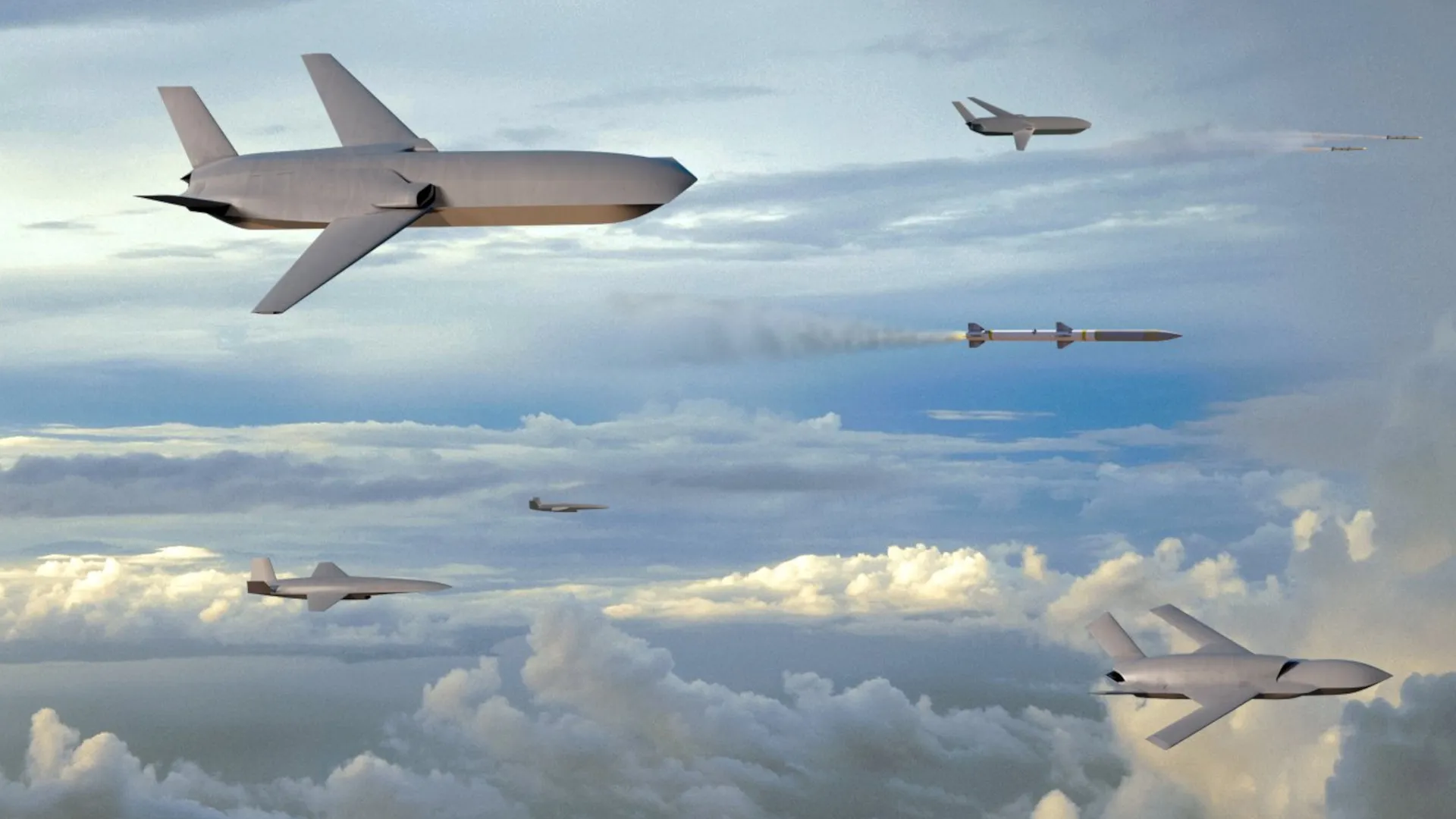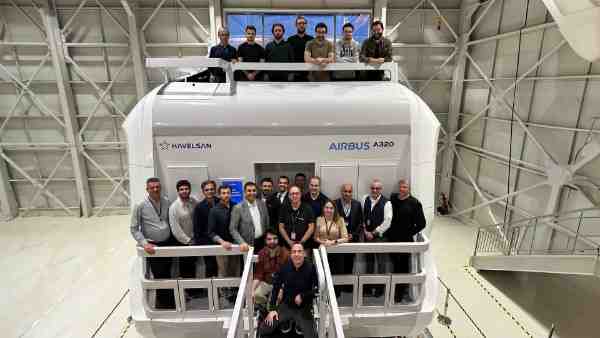The modern contours of warfare have been characterized by pricy, shiny and sophisticated weapons, particularly in the aerial domain where state-of-the-art fighter jets, strike aircraft and stealth bombers are among the mainstay arsenal to carry out deep strikes in enemy territory to take out high value targets. The multi-billion dollar array of arsenal has, for the last few decades, defined how technological edge matters the most in warfare. The Gulf wars and Yugoslav wars were a testament to the lethality of advanced technology outflanking numbered yet inferior technology. What conflicts do indeed show is that they serve as incubators of new tactics and technology as nowhere else does the operationalization of a weapon system be tested so efficiently. Throughout history, militaries have experimented with makeshift equipment to meet urgent tactical needs: be it the “ gun trucks” in Vietnam War , rudimentary booby traps, daily-based cyber attacks to target enemy personnel , retrofitting of small drones with explosives or using small civilian aircraft like a Cessna into military roles.
Last year I penned down for GDI how military observers around the world are drawing up their lessons from Ukraine, where Russia’s numerically superior forces faced defiant yet inventive resistance from Ukrainians. The ingenuity with which Ukraine has retrofitted dual purpose technology to serve as strike vectors against Russia is changing how battlefields and war assets are understood.
For the last many months, Ukraine-Russia war visuals have been replete with “ Cessna-looking aircraft” striking Russian energy infrastructure deep within Russian territory. These slow moving , light aircraft wreak havoc due to their ability to load themselves with hundreds of kilograms of explosives. These civilian aircraft turned into medium weight drones have replaced sophisticated cruise missile and stand-off munitions. Contrasting Russian and Ukrainian strikes into each other’s territory, Ukraine faced an evident lack of cruise missiles or stand-off bombs. Those it did could at best strike 300 to 400 Kms into Russian territory, and these pricy systems were usually taken down by Russia’s robust air defence systems, ( that were heavily concentrated near high value targets and population centres). However, Ukraine has showcased long range strikes using drones that can go deep down Russian territory where it is focusing on targeting Russian energy infrastructure and military industrial units that are the backbone of Russian war effort. Russian air defence network is so saturated that it cannot cover the wide Russian geography, leaving pockets where drone salvos eventually make it through the border. Small drones in large numbers eventually overcome local air defences and strike their targets, at a fraction of the cost of advanced cruise missiles and stand-off munitions. This also gave Ukrainians a better range than Storm Shadow and ATACMS missiles.
Retrofitting of propeller driven light commercial aircraft with drone technology is not new. Rather testing with automated systems has been recurrent in the last decade. USA’s DARPA developed the ALIAS system that was literally a robotic arm that could control a Cessna Caravan . Even private entities like Xwing has converted a Cessna Caravan into an uncrewed aircraft for cargo purposes. The advancements in sensor suites, reduction of kinetic steps in flight operations and Artificial intelligence have augmented autonomous operations in civil-military tech. For civilian aircraft with electronic systems, removing manual pilot controls and replacing them with smart remote/autonomous flight control systems has paved way for this technology.
Back in 2019, US Air force tested a robot flight kit “ ROBOpilot” with DZYNE Technologies that could turn civilian aircraft into drones. A test flight was carried out for a Cessna 206. Now we are witnessing an evolution from merely robotic controls to smart control systems embedded with the flight controls that automatically carries out the functions of yoke and rudder pedals, throttle levers, communications and obviously the pilot ( either human in the loop or entirely autonomous).
Battle damage assessment ( BDA) in the context of the Ukraine-Russia conflict is complicated as open source data is available in variable quantity. Furthermore, data overload is another issue. However , from the visuals one can deduce the methods employed in attacks.
Since last year, imagery from Ukrainian attacks in Russia have shown light-weight A-22 propeller aircraft that have been retrofitted as drones , carrying out deep strikes against industrial and energy infrastructure targets. Imagery of one such attack on a Russian factory making drones was covered by Forbes. The target was nearly 600 miles in Russian territory. Similarly, Ukraine has also claimed to pursue a “ Project Cessna” to develop Kamikaze version of these aircraft that can be fitted with heavier FAB-250 bombs to strike targets up to distances of 2200 kms.
The retrofitting of civilian-light commercial and utility aircraft into the role of UCAV is a newer and if not wrongly deduced, a disruptive phenomenon. Ukraine has sought long range vectors to carry out strikes deep into Russian territory to target military industrial setup that backs Russian war effort. However, the Europeans and Americans have been reluctant to supply long range missiles or munitions due to the anxiety of an uncontrolled escalation. Ukraine, whilst has figured out alternative approaches, albeit quarter of the cost and one which it can produce in mass numbers with a limited and war-torn industrial base. For any military, if a vector can deliver a payload over longer ranges and inflict significant damage, it does the job, be it a cruise missile, or an older recreational aircraft that has been retrofitted with cameras, navigational system and sizeable number of explosives.
The gist of the article is not to establish a case study of the utilization of priorly manned light aircraft in active combat roles in Ukraine solely. But how the propeller driven , cheap, general aviation aircraft will alter a shift in warfare doctrines, now that technological advances have enabled their retrofitting in UAV roles. These aircraft did have military uses, but majorly in the reconnaissance, surveillance or Search and Rescue domain. Some variants of Cessna’s were modified to carry missiles, but that was for close combat support only. Supplanting light aircraft-based UCAVs for deep strike missions is something new, amusingly ingenious and feasible off-the-shelf.
If the total number of Cessnas and similar category aircraft currently active in global airspace is accounted for, it would be hard to substantiate an accurate number. But this is no less than 70,000 for different models. Again, this number would be a subject to retirements, upgradations or conversions. That being said, the number is still very large and underreported.
The accessibility of these systems is what makes them lucrative. In both the USA and Europe, the regulations regarding buying and operating light aircraft, while present, are quite lax in essence. The acquisition of aircraft within the United States is not contingent upon the possession of a specialized license; both individuals and corporations are legally permitted to purchase an aircraft irrespective of whether they hold a pilot’s license. However, the registration of the aircraft with the Federal Aviation Administration (FAA) requires the registrant to be a U.S. citizen or a lawful permanent resident. Non-citizens are nevertheless able to establish ownership through alternative legal mechanisms, such as registration via a trust or incorporation of a company under U.S. jurisdiction. As in the United States, the purchase of an aircraft within Europe does not require the buyer to possess a pilot’s license. However, for registration under the European Union Aviation Safety Agency (EASA) framework, the registrant must either be a citizen of, or a corporate entity established in, an EASA member state. In cases of non-EU ownership, registration is typically facilitated through legal arrangements such as trusts or partnership structures.
Airworthiness certifications are also mandated. But the crux of the matter is that accessibility of these aircraft is easy. In the Global South, legal compliance is more perplexing and can be circumvented with ease.
So imagine a non-state actor employing a civilian-use aircraft, retrofitted with a UAV kit, insert explosive ordnance and taking off from a short paved path to strike targets hundreds of kilometres away. This is the Pandora’s box that state actors and civil aviation authorities face. The regulation of these small aircraft is quite difficult. Since many of these can be privately owned by individuals and sold just like cars, or maybe not even owned. An airworthy airframe can always be repaired by parts like engines, avionics, and radio communications since the instruments in these aircraft are easier to come by.
In coming years, small aircraft will be utilized for active combat by both states and non-state actors. The latter might take some time catching up ( due to lack of resources and infrastructure), but they will. They might not require the intensity or frequency of using these systems that a military would, but singular attacks for sinister purposes do more damage in peacetime than wartime.
From a military angle, defence companies, taking examples from Ukraine, will lure countries to integrate UAV kits into these aircraft, after all it would be cost-effective yet a deadly vector for long-range strikes ( which otherwise would require Long-range cruise missiles or smart air launched stand-off munitions.)
In all cases, the new angle of light aircraft and their ease of retrofitting pose a daunting question for national security. For states, these offer cheaper solutions in terms of acquisition and credible strikes. For non-state actors, it is a lethal vector that would incur deniability and destabilization for the subject being targeted. Law enforcement agencies would have to be stretched, unrealistically in the current scenario, to monitor all small aircraft, their ownership, locations, and monitor remote runways that can be used to launch these aircraft.
What can be deduced is that employment of “Cessna-type aircraft” will not be limited to Ukraine. The disruptive nature of how unmanned systems are being advanced and integrated in dual-use systems is simply too rapid, too rapid to monitor and control. The defence industry will offer its services to retrofit drone kits, and gradually, the counter-drone measures. The employability of these systems will define their role in upcoming conflicts, be it by militaries or any militant groups. This also provides a blueprint for the future where all currently manned platforms could be used in similar roles : commercial jets, fighter jets, VIP fixed-wing aircraft, and even helicopters. The same AI that would replace pilots for real flights, would be the same that would carry autonomous combat sorties on such platforms, all the while learning, adapting and evolving.

Table of Contents
ToggleHammad Waleed
Hammad Waleed is a Research Associate at Strategic Vision Institute, Islamabad. He graduated with distinction from National Defence University, Pakistan. He writes on issues pertaining National Security, Conflict Analysis, Strategic forecast, and Public Policy. He can be reached at hammadwaleed82@gmail.com.













